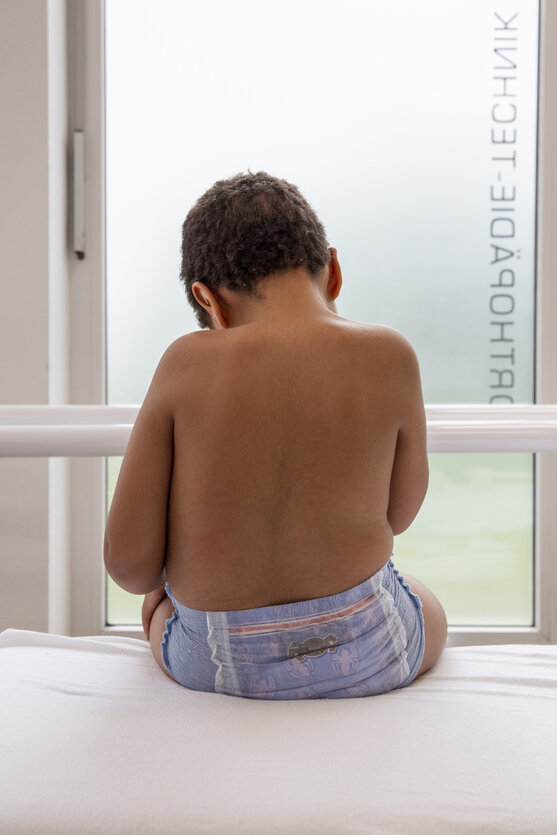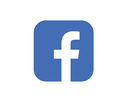With this method, we can simulate your corset before it is produced.
We show you scoliosis exercises for a strong back and train you in the daily use of your corset.
Make an appointment over the phone or send us a message!

What is neurogenic scoliosis?
Compared to a healthy spine, which can bend forward and backward, in the case of scoliosis the spine also curves to the side. Scoliosis (Greek for curvature) is therefore the term used to describe a three-dimensional axial deviation of the spine. Colloquially, the term "spine curvature" is also frequently used.
Idiopathic scolioses occur most frequently (approx. 85%), the causes of which are still unknown. In neurogenic scolioses, on the other hand, the cause is known. They usually develop due to an underlying disease such as ICP or myelomeningocele.
When the cause of a spinal deformity is neurological disease, it is called neurogenic or neuromuscular scoliosis. This form of scoliosis is divided into neuropathic and myopathic.
In neuropathic scoliosis, the cause is a damaged nervous system that results in the curvature of the spine.
In myopathic scolioses, diseases of the musculature are present, such as hereditary muscle weakness diseases. Loss of muscle control results in muscle imbalance, which leads to uneven loading of the vertebral bodies. As a result, vertebral body growth develops asymmetrically and bony deformities of the vertebral bodies occur.
Basically, any neuromuscular disease of growing age can cause scoliosis. In contrast to idiopathic scoliosis, which only becomes noticeable in adolescence, neurogenic scoliosis is already found in infancy and early childhood. It can take on completely individual forms and dimensions.
Neurogenic scoliosis occurs in connection with the following neurogenic clinical pictures, among others:
Spinal deformity requires a therapy concept adapted to the underlying disease.

How can you recognize scoliosis?
Scoliosis can be associated with visible symptoms, but also with invisible symptoms that are not noticeable at first glance. Visible signs of scoliosis include a difference in the height of the shoulders, a crooked head posture, a protruding shoulder blade or a crooked back. In severe forms of scoliosis, the pelvis is also crooked (pelvic obliquity).
The so-called rib hump is also a common symptom of severe scoliosis. This hump, which is caused by a curvature of the rib cage, is located on the side of the back toward which the spine curves. As a rule, the rib hump occurs from a Cobb angle (= degree of curvature) of about 40 degrees.
Because scoliosis causes a displacement of the spinal muscles, it can also be recognized by muscle bulges in the cervical or lumbar region. From a Cobb angle of about 60 degrees, lumbar bulges become clearly visible.

Depending on the direction in which the spine is curved, a distinction is made between:
- Scolioses curved to the left (left convex)
- Scolioses curved to the right (right convex)
In addition to the actual curvature (primary curvature), the spine often also forms a compensating secondary curvature on the opposite side, which connects below or above the primary curvature. This natural reaction of the back occurs in order to enable a plumb and statically correct stance. In other words, the body tries to center the head above the pelvis by forming compensating curves.
Treatments for neurogenic scoliosis
How can scoliosis be treated?
Whether and how scoliosis needs to be treated depends on various factors:
- the age of the person affected
- the severity of the scoliosis and
- its cause.
Treatment of scoliosis should begin as early as possible - even if the patient is pain-free! This is because once the spine is fully grown, the curvature of the spine can only be influenced with difficulty or not at all. This makes early detection through regular preventive examinations all the more important, but also through the targeted gaze of parents and teachers.
In children and adolescents, the spine is still growing. Immediately before or during puberty, growth spurts can occur in which the spine deforms. This deformation can occur very suddenly and worsen quickly. In contrast, if an adult is diagnosed with mild scoliosis, it is unlikely that the curvature will worsen.
The spine can be curved to varying degrees. The doctor uses an X-ray to determine the degree of curvature (Cobb angle). Often, a slight deviation of the axis is sufficient. Treatment is then not absolutely necessary. In this case, however, the spine should be checked at regular intervals until growth is complete. This allows early detection of whether the spinal curvature is increasing and the scoliosis should be treated.
In principle, scoliosis can be treated surgically or conservatively, although surgery is only necessary in the case of very severe scoliosis. Conservative treatment methods include physiotherapy and orthopedic devices such as the corset.
Back pain is not an indicator of scoliosis, but it can occur in some cases. If you experience back pain due to your scoliosis, the exact causes must first be clarified. Appropriate physiotherapy exercises, a corset and sports are ways to counteract the pain.
Together with the physiotherapist, scoliosis patients learn practical exercises to correct the spinal curvature through their own use of muscles and correct breathing. Sports and exercise are generally very useful in scoliosis because they strengthen the abdominal and back muscles, which in turn provide support for the spine.
Physiotherapy exercises are usually done without the use of special equipment, so they can be done daily from home.
If you are fitted with a corset at Pohlig, our physiotherapists will accompany you and give you helpful tips for therapy in your home town.
An orthopedic corset is a custom-fitted trunk orthosis that applies pressure to specific areas of the spine. Through cavities in the corset, the back actively moves into the correct position. In this way, a corset can correct spinal misalignment and halt the progression of a curvature.
In addition to its support function, the corset is an important therapeutic device. Physical therapy is usually prescribed in addition to corset treatment. The physiotherapists explain to the scoliosis patients, among other things, how the back can be steered into the correct position by special breathing exercises in the corset.
For treatment with a corset to be effective, the orthosis must be worn as much as possible - ideally 23h a day (i.e. also at night). The success of the therapy is checked at regular intervals and the corset is adjusted to the growth of the child or adolescent if necessary.
Surgical treatment of scoliosis is only considered if the spinal curvature is very severe and conservative treatments (physiotherapy, corset) do not lead to any improvement.
Spinal surgery is considered, for example, when the curvature of the scoliosis is over 50° according to Cobb, the curvature is worsening and the internal organs such as the heart or lungs are restricted in their function.
There are different surgical methods, which you should clarify individually with the attending physician or the surgeon. In principle, surgery corrects and stabilizes the shape of the spine as far as possible. In some cases, the spine can also be stiffened during surgery (spondylodesis). The affected areas are then fixed with implants (e.g. screws or rods) so that the vertebral bodies can grow together. These operated vertebral bodies are then no longer movable against each other.
In some cases, a corset is recommended as a post-surgery treatment.
Physiotherapy for patients
with neurogenic scoliosis
Our physiotherapist Melli explains what neurogenic scoliosis is and what exercises you can do at home.
The video is suitable for all scolioses with underlying neurological disease.

Let yourself be inspired! We accompany many interesting patients during their Pohlig appointment and give you personal insights.

For those who want to delve even deeper into the matter, we have a suitable video for almost every supply area.

Take a look behind the scenes at Pohlig and find out about diagnoses and our innovative aid solutions!

The corset
The corset is an orthosis that corrects your spine. We inform you about the different types of corsets, the exact fitting procedure and interesting therapy options.


